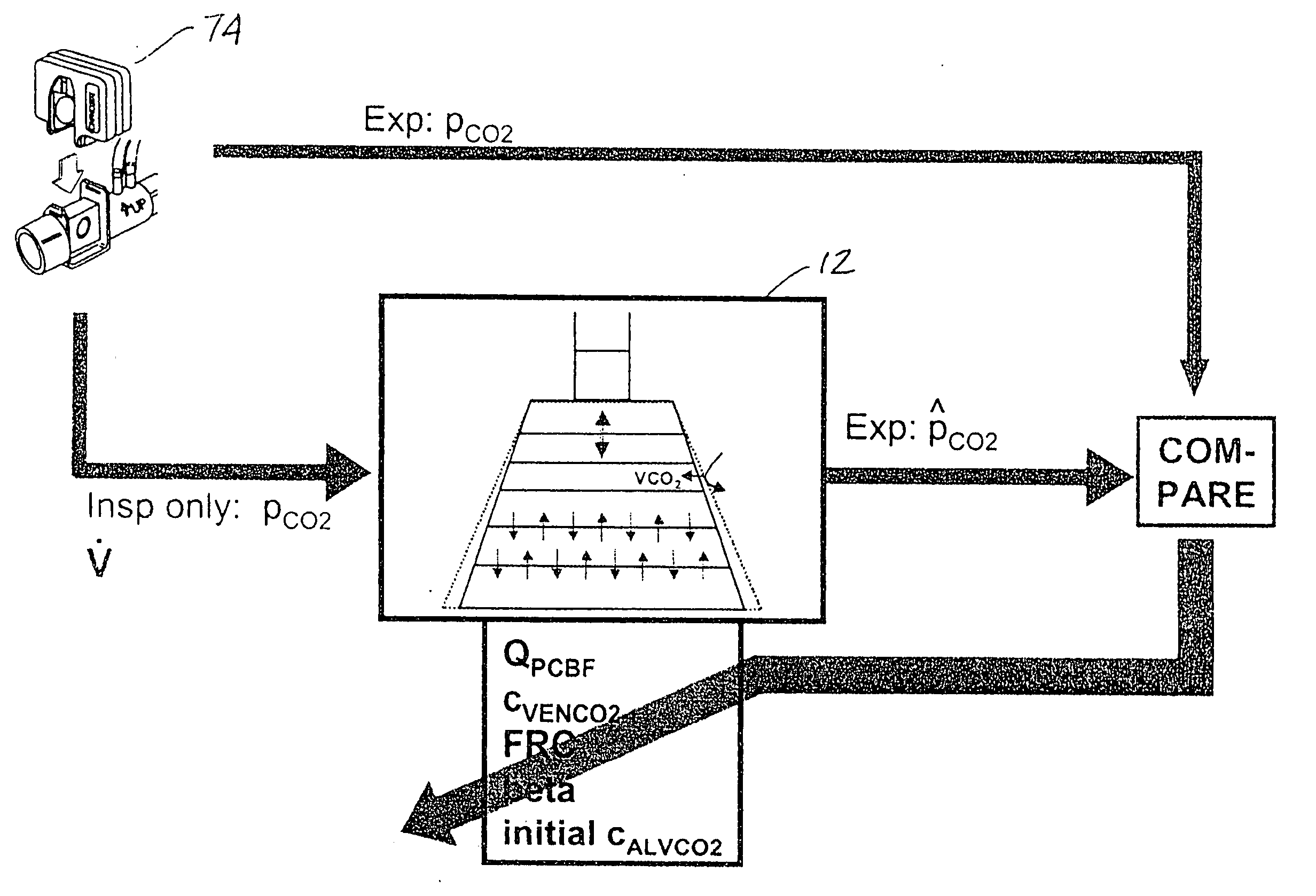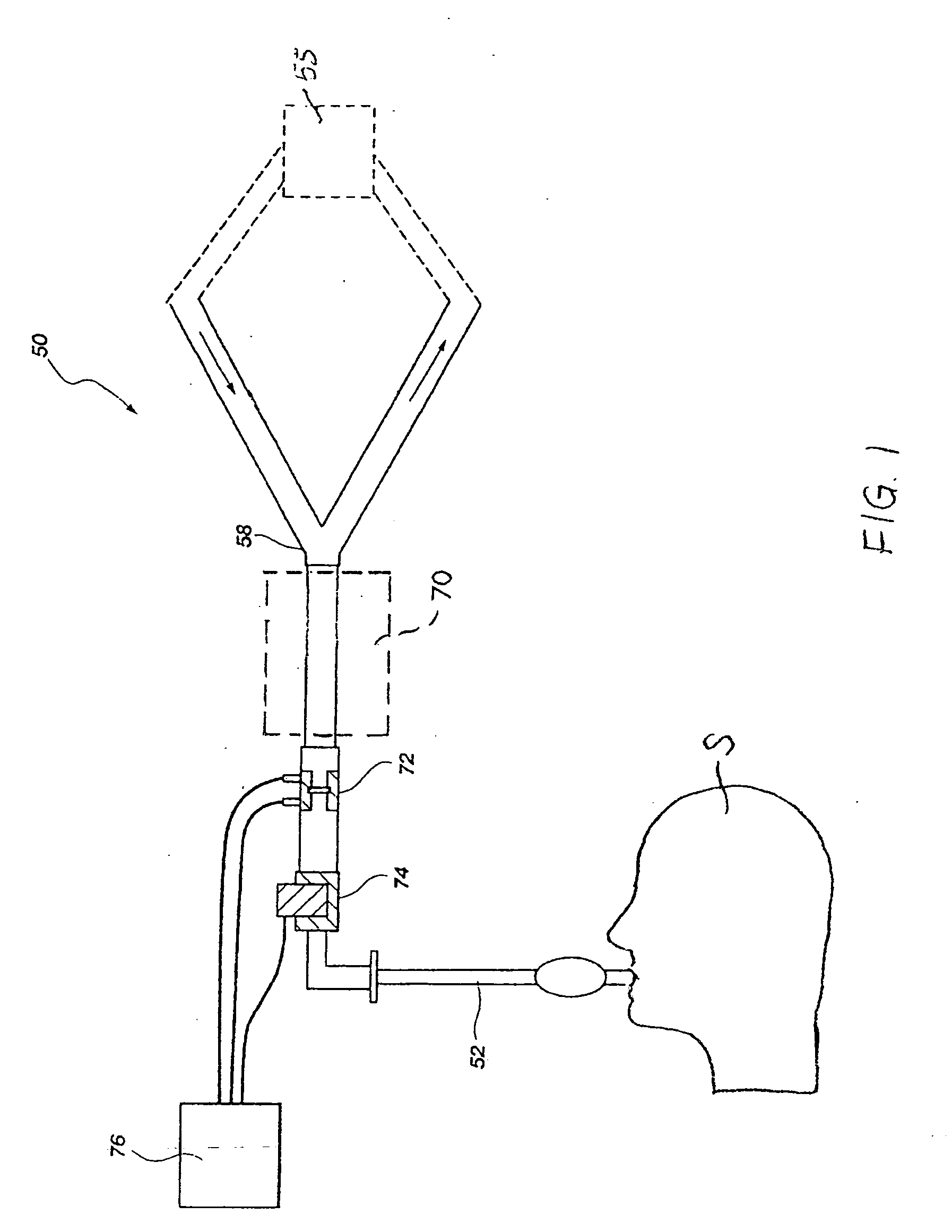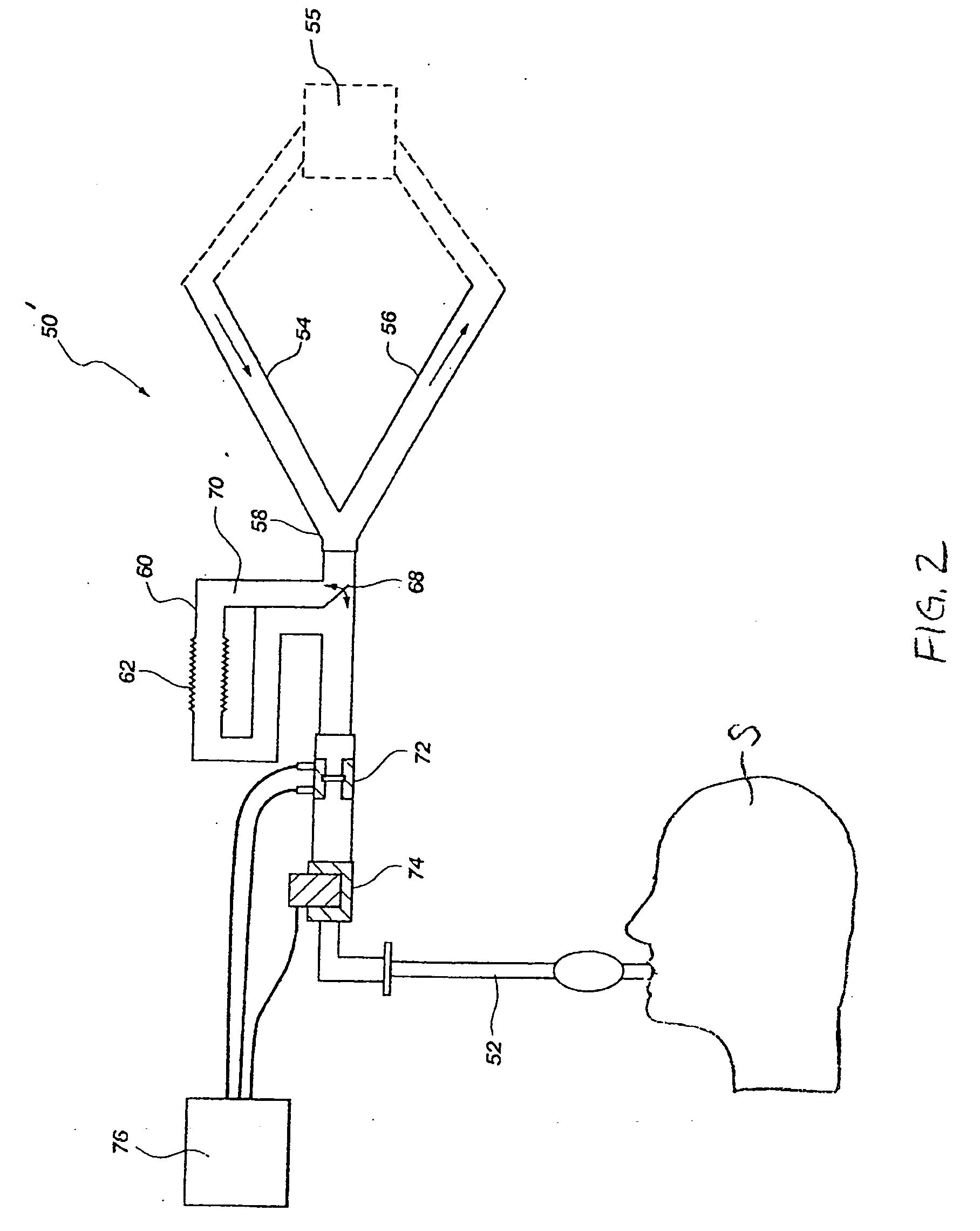Lung model-based cardiopulmonary performance determination
a cardiopulmonary performance and model technology, applied in the field of methods, can solve the problems of difficult to obtain accurate vosub>2 /sub>measurements, undesirable temperature and other indicator dilution techniques, and achieve the effect of accurately resembling measured parameters
- Summary
- Abstract
- Description
- Claims
- Application Information
AI Technical Summary
Benefits of technology
Problems solved by technology
Method used
Image
Examples
Embodiment Construction
[0047] The present invention includes methods for noninvasively determining one or more indicators of the cardiopulmonary health of a subject. In the inventive methods, carbon dioxide and flow signals of a subject are monitored and the data therefrom evaluated over the course of a predetermined period of time, which exceeds the length of an entire single breath (inspiration and expiration). The carbon dioxide and flow data are then evaluated and compared with a multi-component mathematical model of the subject's lung, e.g., a human lung, the lung of another mammal, the lung of another animal, etc., into which values for one or more indicators of the cardiopulmonary health of the subject are input.
[0048] For example, an indicator such as cardiac output (or pulmonary capillary blood flow), functional residual capacity (FRC), or the content of carbon dioxide in the mixed venous blood of the subject (CvCO2) may be input into the multi-component mathematical model. If the carbon dioxide...
PUM
 Login to View More
Login to View More Abstract
Description
Claims
Application Information
 Login to View More
Login to View More - R&D
- Intellectual Property
- Life Sciences
- Materials
- Tech Scout
- Unparalleled Data Quality
- Higher Quality Content
- 60% Fewer Hallucinations
Browse by: Latest US Patents, China's latest patents, Technical Efficacy Thesaurus, Application Domain, Technology Topic, Popular Technical Reports.
© 2025 PatSnap. All rights reserved.Legal|Privacy policy|Modern Slavery Act Transparency Statement|Sitemap|About US| Contact US: help@patsnap.com



